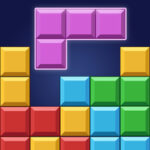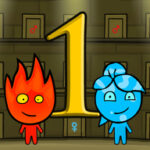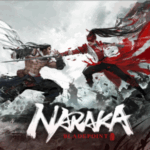The Legend of Zelda: A Timeless Epic That Defined Gaming
Few franchises in the history of gaming have achieved the cultural, artistic, and mechanical impact of
The Legend of Zelda. First released in 1986, this series by
Nintendo has become more than just a collection of video games—it's a defining landmark in the evolution of the medium. With its epic tales, iconic characters, intricate dungeons, and emphasis on exploration, Zelda has continuously reinvented itself while remaining true to its roots.
In this 2000+ word in-depth article, we explore the origins, evolution, gameplay mechanics, major entries, and future of the
Zelda franchise. From the humble beginnings of pixelated Hyrule to the sprawling open world of
Breath of the Wild,
The Legend of Zelda has not only entertained generations but also shaped what it means to be an adventure game.
1. The Birth of a Legend: The Origins of Zelda
The Vision of Shigeru Miyamoto
The
Legend of Zelda was conceived by
Shigeru Miyamoto, the same mastermind behind Mario and Donkey Kong. Inspired by his childhood explorations of forests and caves near his home in Kyoto, Miyamoto wanted to create a digital world that felt full of mystery and discovery.
1986: The First Adventure
The original
Legend of Zelda launched in 1986 on the
Famicom Disk System in Japan and later on the
NES in North America. It introduced players to the kingdom of
Hyrule, where the young hero
Link must rescue
Princess Zelda from the clutches of
Ganon. The game’s use of
non-linear exploration, a save system, and hidden secrets set it apart from other games of its time.
2. Establishing the Formula: Early Sequels and Innovations
Zelda II: The Adventure of Link
The direct sequel introduced side-scrolling combat and RPG-style experience points. Though divisive, it showed that Nintendo was willing to experiment early in the franchise’s life.
A Link to the Past
In 1991,
A Link to the Past for the SNES brought the series back to its top-down roots while vastly improving the visuals, controls, and storytelling. It introduced the concept of
dual worlds—a mechanic that would be revisited in later titles—and established the
"Zelda formula": dungeons, items, exploration, and epic storytelling.
3. Breaking into 3D: Ocarina of Time and the Golden Age
Ocarina of Time (1998)
When
Ocarina of Time was released for the
Nintendo 64, it set a new standard for 3D action-adventure games. The Z-targeting system revolutionized combat, and the game’s seamless blending of puzzles, combat, and storytelling made it a critical and commercial success.
Majora’s Mask (2000)
Using the same engine,
Majora’s Mask introduced a
time-loop mechanic, darker themes, and more complex NPC interactions. It was praised for its emotional storytelling and depth, despite being released just two years after
Ocarina.
4. A New Direction: Wind Waker and Stylized Storytelling
The Cel-Shaded Revolution
2002’s
The Wind Waker shocked fans with its
cel-shaded art style, which initially drew criticism for being too cartoonish. But the game has since become a fan favorite for its expressive visuals, ocean exploration, and emotional story.
Exploration Over Combat
Wind Waker emphasized sailing across a vast sea dotted with islands, encouraging players to discover secrets at their own pace. It showed that
Zelda could be peaceful and introspective, as well as heroic.
5. Twilight and Skyward: Experimentation and Structure
Twilight Princess (2006)
Designed in response to the backlash over Wind Waker’s visuals,
Twilight Princess adopted a
darker, more realistic tone. It featured
wolf transformation mechanics and was the first Zelda game to launch alongside a new console (
Wii), leveraging motion controls.
Skyward Sword (2011)
Skyward Sword leaned heavily into
motion-based gameplay, using the Wii’s motion sensor for swordplay and puzzles. Though criticized for its linear structure and forced tutorials, it deepened the lore by exploring the origin of the Master Sword and Hyrule’s mythology.
6. Reinventing the Open World: Breath of the Wild
The Breath of Fresh Air
Released in 2017 for
Nintendo Switch,
Breath of the Wild marked the most significant shift in the franchise. Gone were the rigid dungeons and locked progression; instead, players were dropped into a massive, fully open world with nearly complete freedom.
Physics, Chemistry, and Survival
The game’s engine featured
dynamic systems, including weather, physics interactions, and stamina-based climbing. Cooking, hunting, and weapon durability added layers of survival mechanics.
Innovations in BotW:
- Climb-anything mechanic
- Shrines over traditional dungeons
- Environmental storytelling
- Voice acting and cutscenes
7. Tears of the Kingdom and the Future of Zelda
Building on Greatness
The Legend of Zelda: Tears of the Kingdom (2023) expanded upon Breath of the Wild with verticality (sky islands), crafting systems, and new lore. It continued the non-linear approach while deepening the narrative and mechanical possibilities.
Open World Evolution
Where
BotW was about
freedom through simplicity,
TotK focused on
freedom through creativity. Players could now fuse weapons, build machines, and manipulate the environment in unprecedented ways.
8. Storytelling and Mythology: Themes and Symbolism
Eternal Reincarnation
The Zelda series often features the
trifecta of Link, Zelda, and Ganon, reincarnated across generations. The
Triforce, representing
Power, Wisdom, and Courage, symbolizes the moral and philosophical themes embedded in each game.
Mythic Archetypes
Each game draws from:
- Joseph Campbell’s Hero’s Journey
- Shinto and Christian symbolism
- Mythical archetypes such as the Trickster (Tingle), the Sage (Zelda), and the Hero (Link)
9. Gameplay Mechanics: Puzzles, Combat, and Innovation
Puzzles and Dungeons
Zelda’s signature has always been its intricate dungeons. Each dungeon revolves around a specific item or mechanic—hookshot, bombs, bow—and often features thematic bosses.
Combat Systems
From swordplay to archery to magic, combat has evolved with every generation.
Z-targeting, introduced in
Ocarina, is still the gold standard in 3D action games. Recent titles like
TotK offer
sandbox-style combat, encouraging creativity.
Core Gameplay Elements:
- Exploration
- Environmental puzzles
- Boss battles
- Item-based progression
Conclusion: The Legend Lives On
The Legend of Zelda is more than just a video game franchise—it’s a cultural institution. For nearly four decades, it has consistently raised the bar for what a video game can be. Whether it's the freedom of
Breath of the Wild, the emotional gravity of
Majora's Mask, or the charm of
Wind Waker, every Zelda game is a masterclass in design, storytelling, and ambition.
With new technology, player creativity, and evolving narratives, the series shows no signs of slowing down. As long as there are legends to be told and kingdoms to be saved,
The Legend of Zelda will remain a cornerstone of gaming history.





























